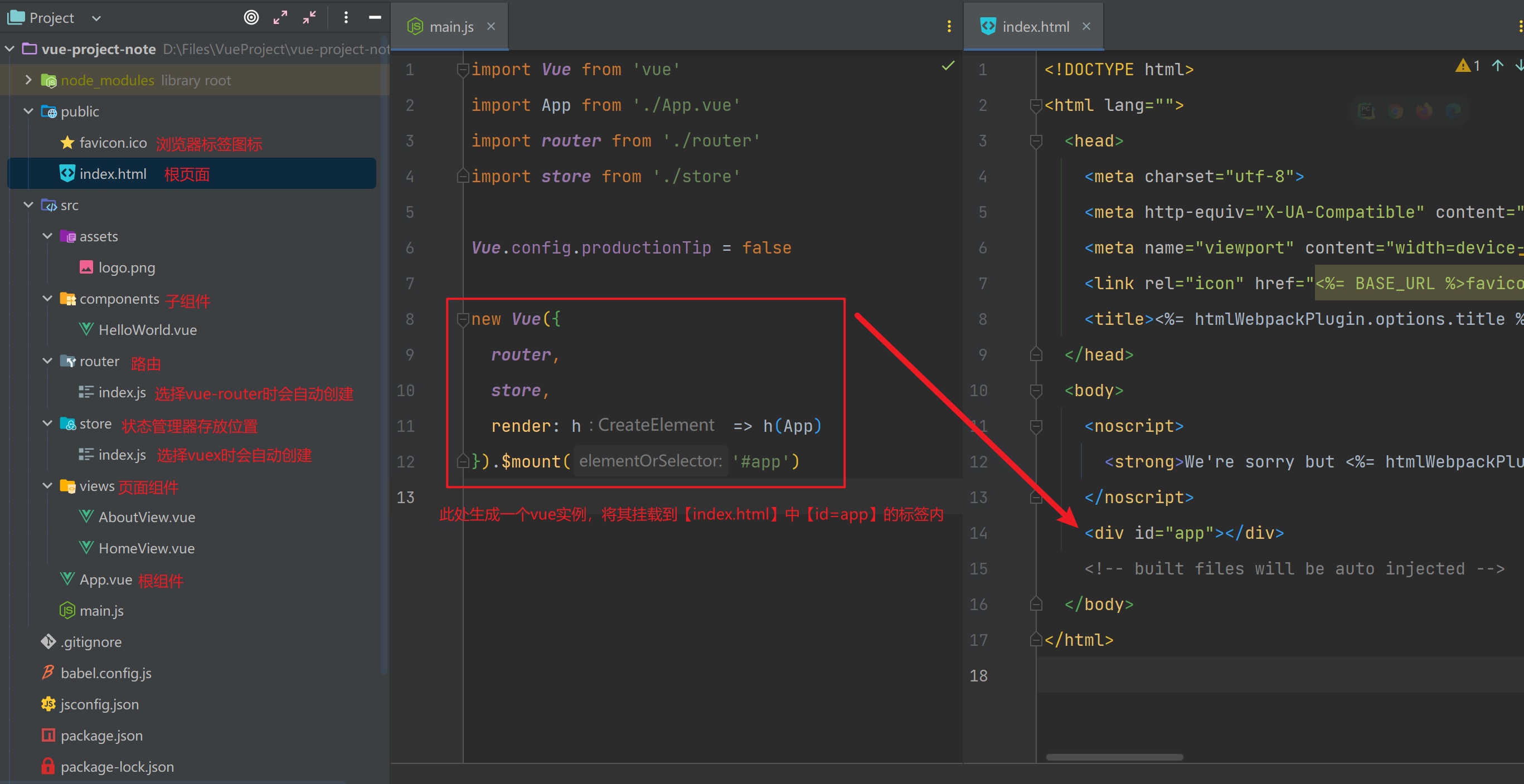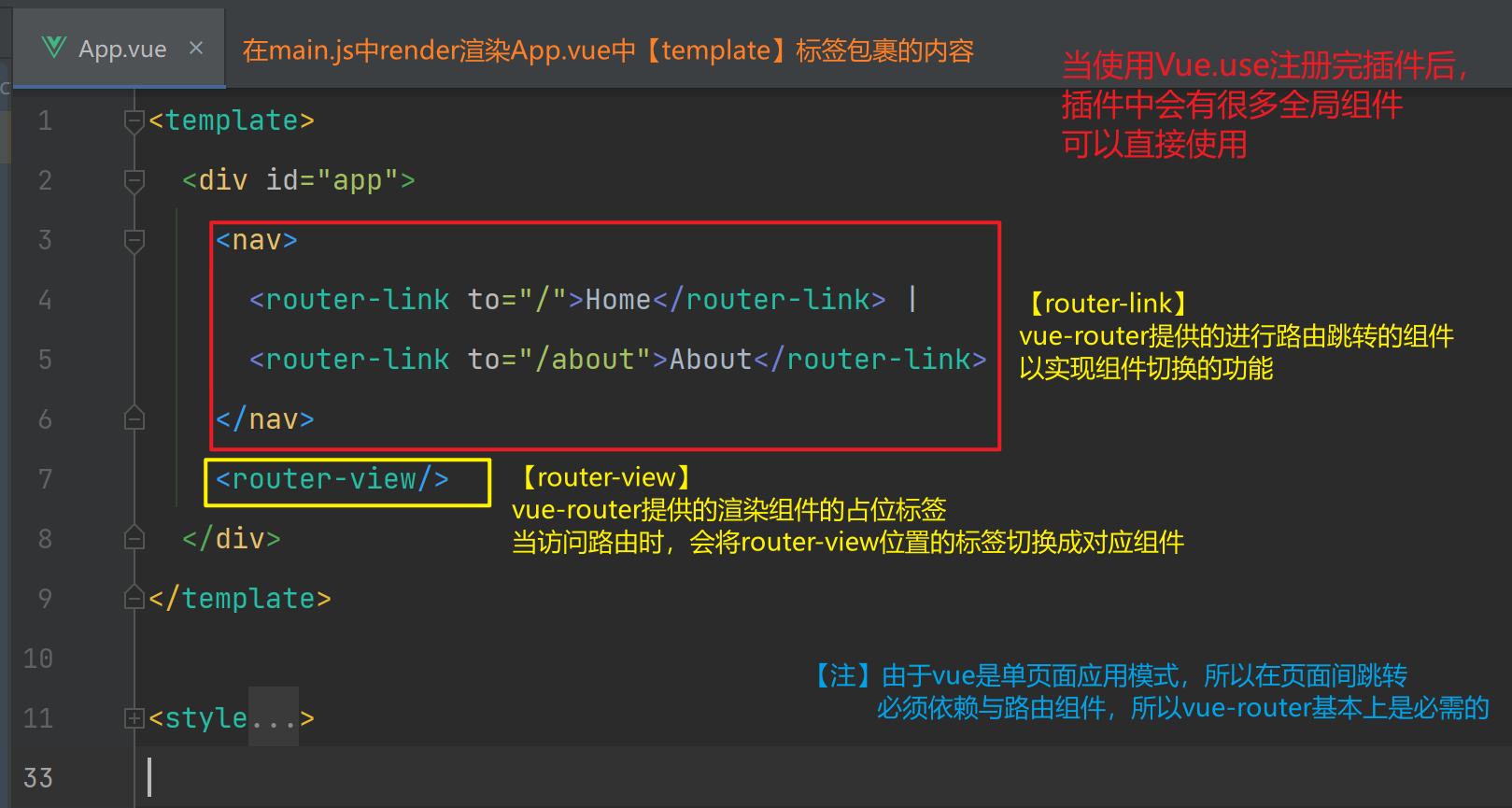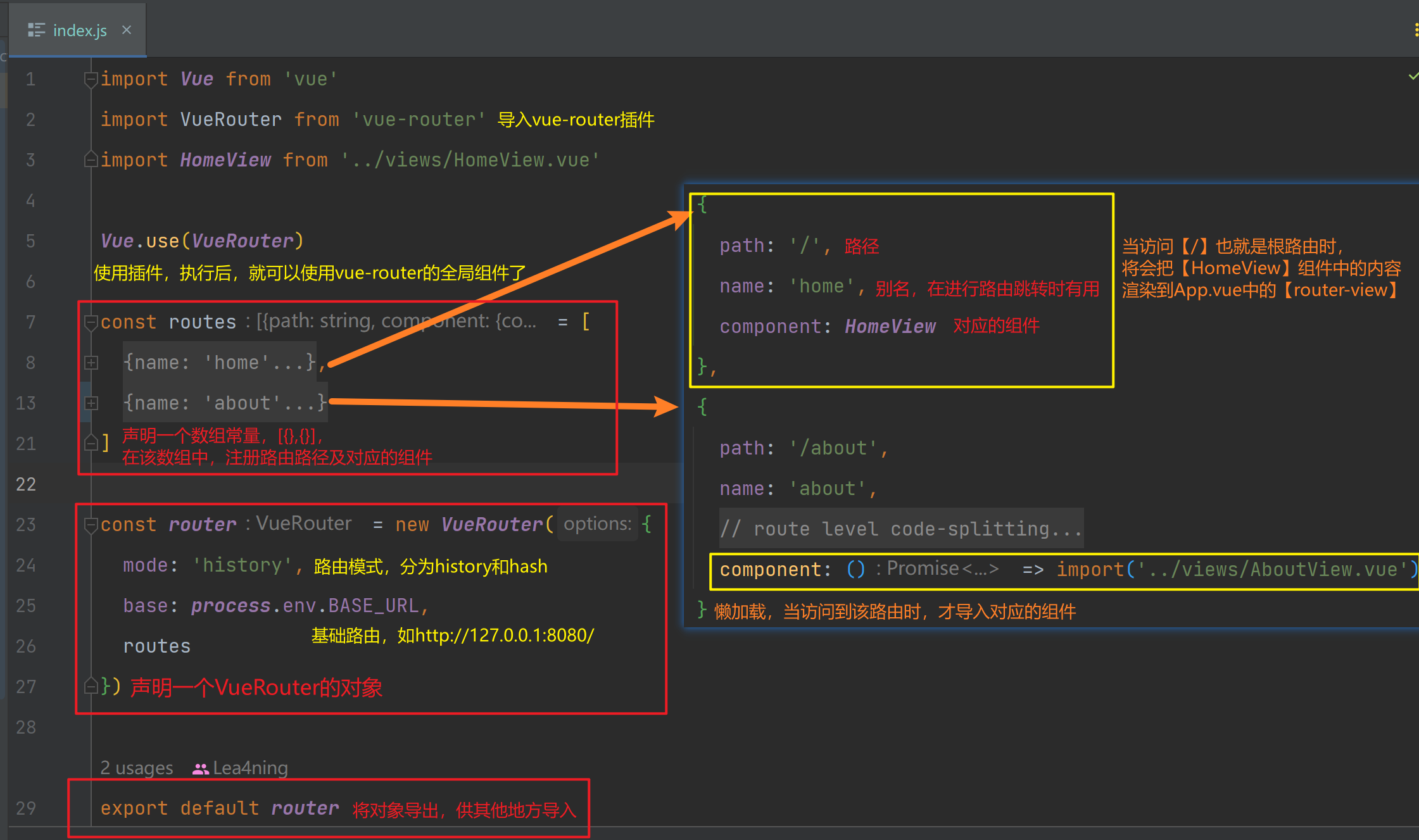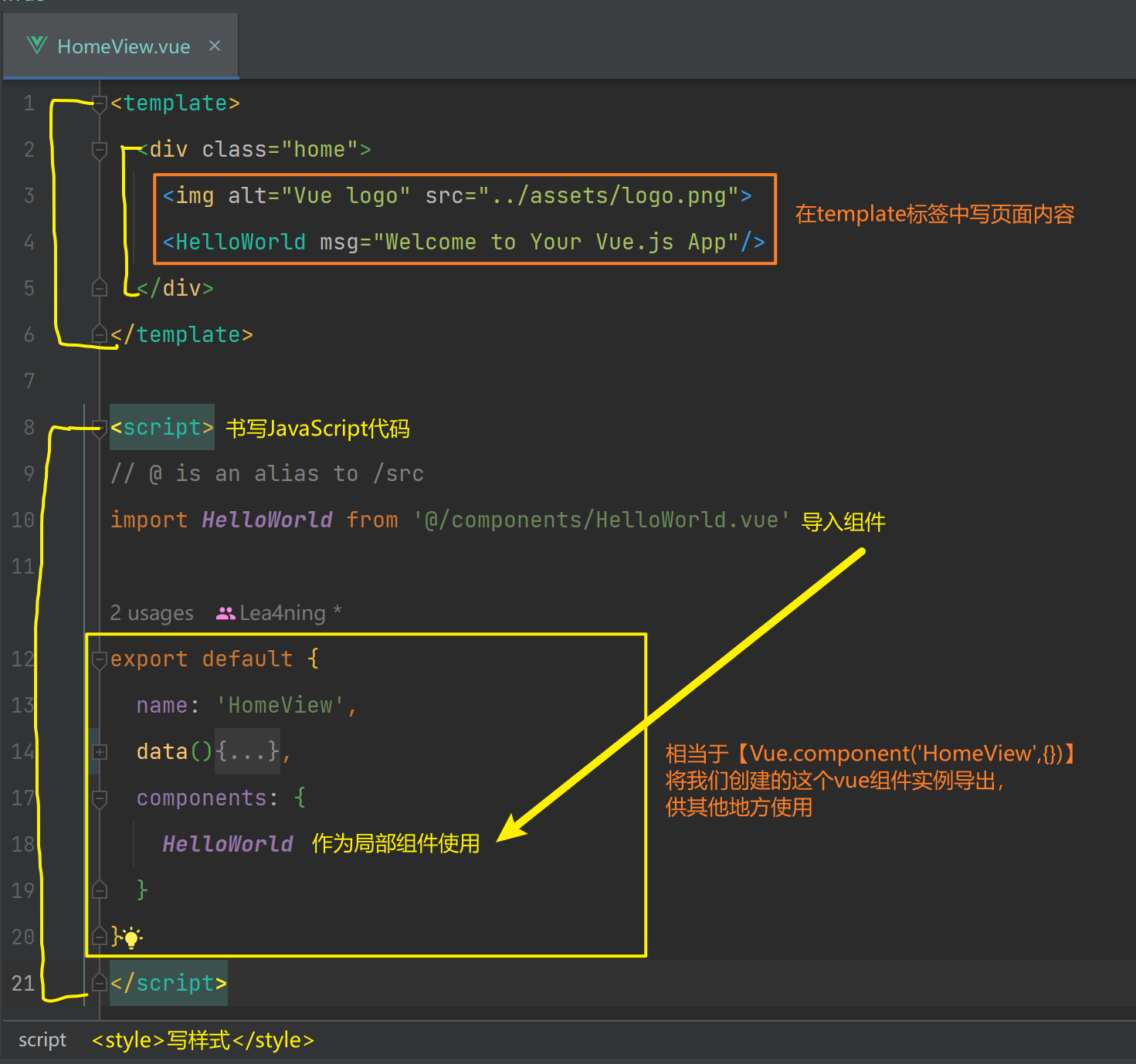Vue2项目[基于vue-cli]工程化
【一】环境搭建
安装node
使用npm/cnpm
npm换源:npm config set registry https://registry.npmmirror.com
安装vue-cli
cnpm install -g @vue/cli
# 安装脚手架
cnpm install -g @vue/cli
# 切换目录,创建项目
cd '指定目录下'
vue create 项目名
# 选择配置
# 使用 【方向键】选择 回车键进入下一步
# 选择插件时,使用【空格键选中/取消】





【二】文件夹目录
|- vue-project # 项目文件名
|- node_modules # 项目环境
|- public # 存放公共资源
|- favicon.ico # 网站的图标文件
|- index.html # 项目的入口 HTML 文件
|- src # 项目的源代码文件夹
|- assets # 存放静态资源文件
|- components # 存放vue组件文件
|- HelloWorld.vue
|- router # 存放 Vue Router相关的配置文件
|- index.js # 定义路由映射关系
|- views # 存放视图组件文件
|- HomeView.vue # 默认首页内容
|- AboutView.vue # 默认关于页面内容
|- App.vue # 项目的根组件
|- main.js # 项目的入口
|- package.json # 项目配置文件 # npm install 时会根据这个
|- package-lock.json # 用来确保安装的依赖包与开发版本一致
|- vue.config.js # vue cli 项目的配置文件

【三】项目运行机制
【1】main.js
// 导入 与 from xxx import xxx 一样
import Vue from 'vue'
import App from './App.vue'
import router from './router'
Vue.config.productionTip = false
// new 一个Vue实例
new Vue({
router, // router对象 // 相当于router:router对象
render: h => h(App) // 以App作为根组件创建虚拟dom
`render: h => h(App) 定义根组件的渲染方法 # 接收createElement函数作为参数 创建虚拟dom
等价于:
render: function (createElement) {
return createElement(App);}
`
}).$mount('#app') // 将该实例挂载到【index.html】中【id=app】的标签上
【2】App.vue
- 【注意】在vue2中,template标签中的内容,只能有单个标签,也就是template下只能有一个子标签
<template>
<!-- vue2,在template标签下,只能有一个标签 -->
<div>
<p>其他代码</p>
</div>
<!-- 如果有其他标签,将会抛出异常 -->
<div></div>
</template>

【3】router/index.js
- 在文件夹下的index.js,与python包的
__init__类似,当导入时,会先执行index.js,如果写在index.js中的代码,可以导入到文件夹那层即可

【4】HomeView.vue(组件基本结构)
- 在vue2中,基本结构为
<template>
<div>
</div>
</template>
<script>
</script>
<style>
</style>
